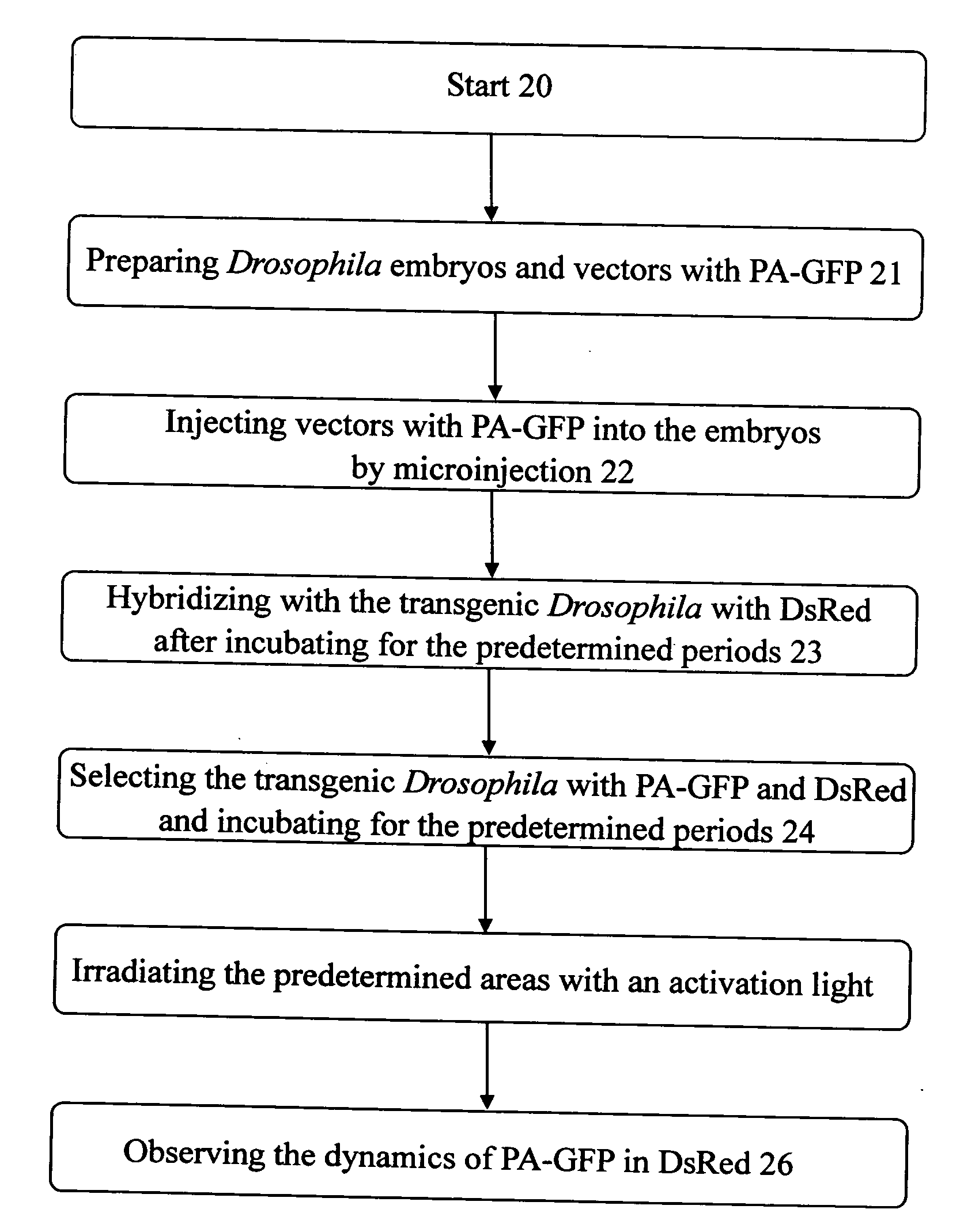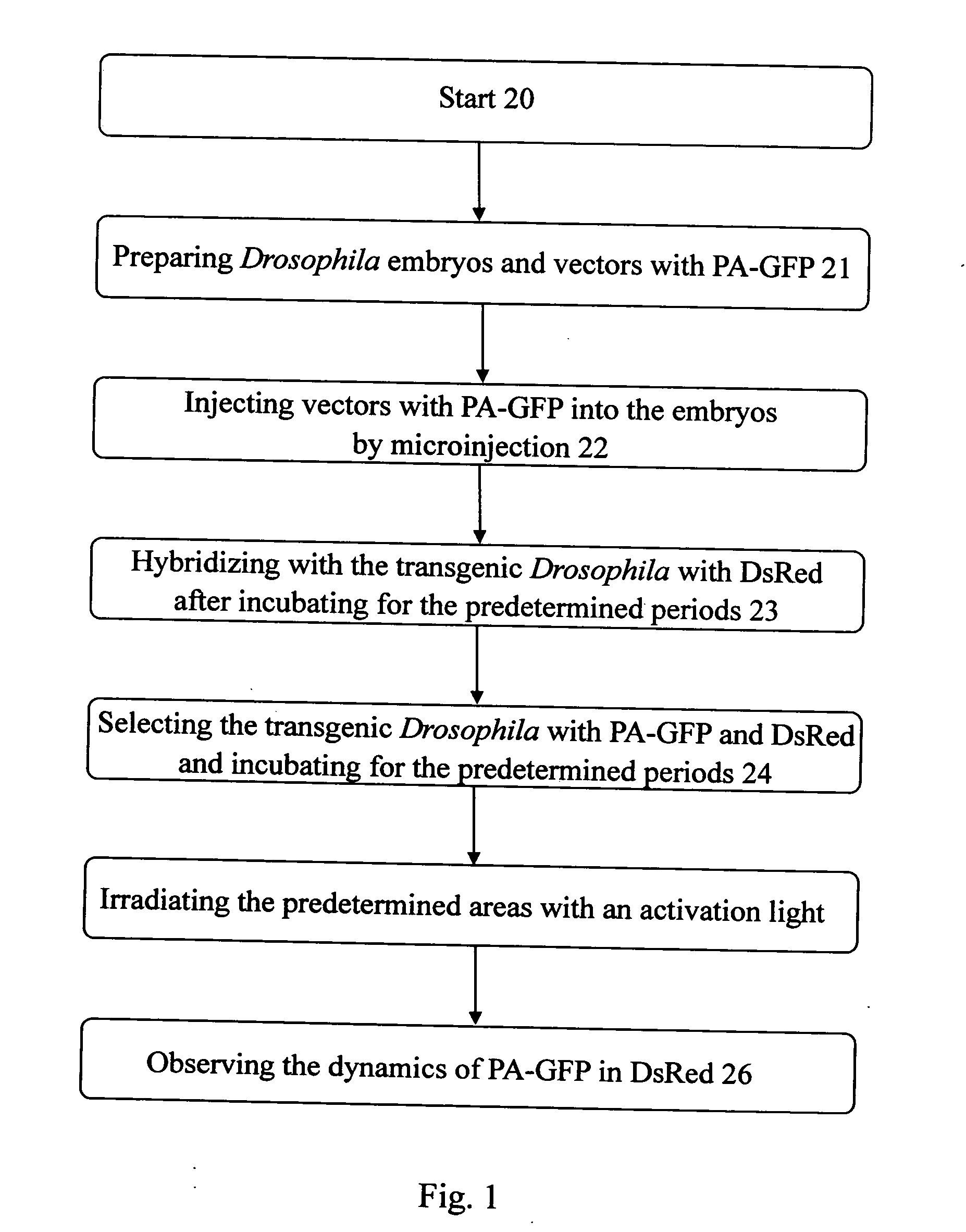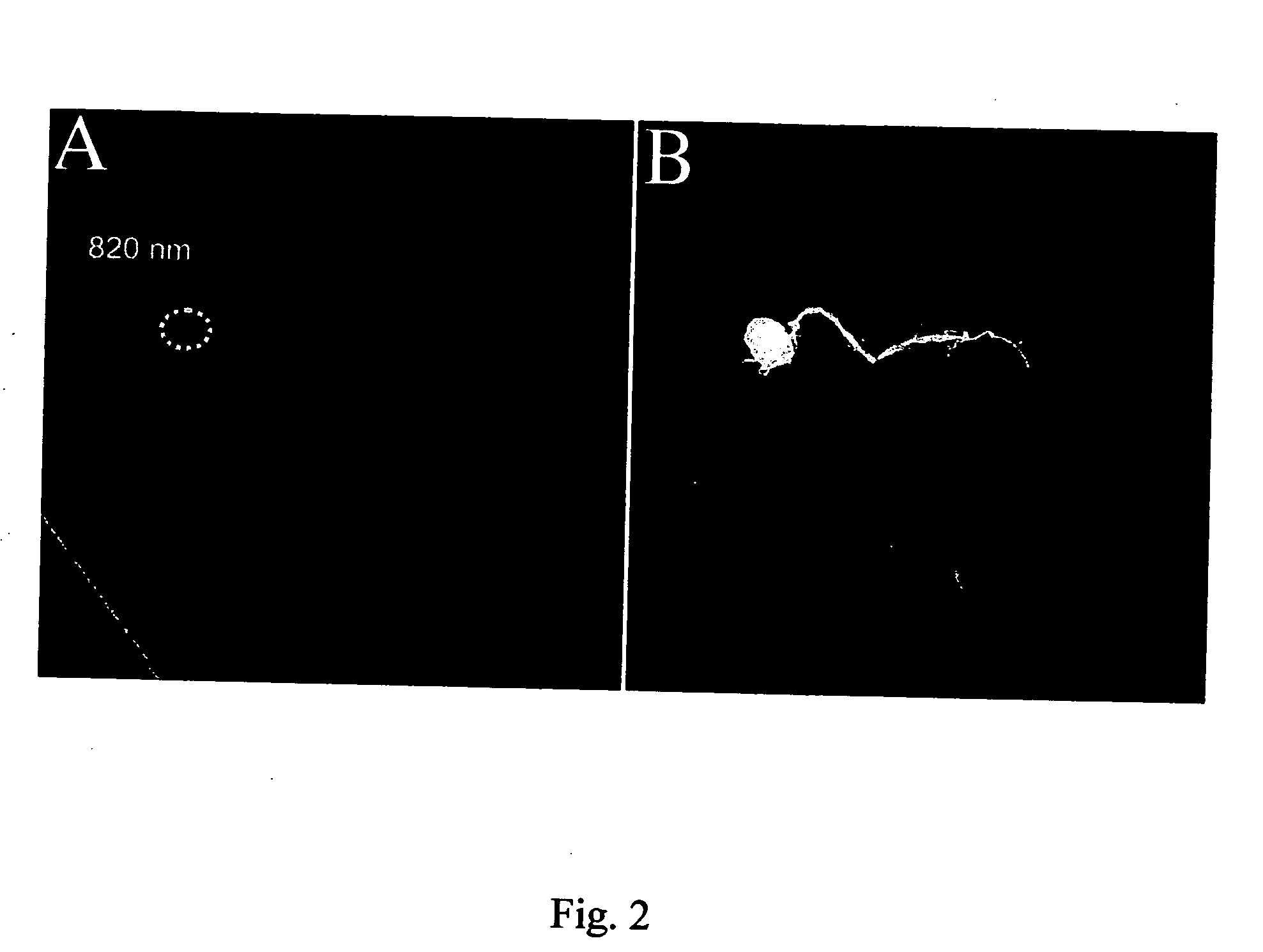Method for labeling specific cells within living cells or tissues
- Summary
- Abstract
- Description
- Claims
- Application Information
AI Technical Summary
Benefits of technology
Problems solved by technology
Method used
Image
Examples
Embodiment Construction
[0026]The drawings and the following descriptions present and describe the purpose of illustrating the preferred embodiments of the present invention only, and are not for the purpose of limiting the present invention. The present invention provides the information for intracellular protein expression and neuron networks, and a preferred embodiment for protein expressions induced in Drosophila embryos. Such an expressing system should be modular to facilitate expansion for multiple proteins with different functions.
[0027]Several photoactivable proteins are disclosed. For instance, photoactivable green fluorescent protein (PA-GFP) (Science (297):1873, 2002), kindling fluorescent protein 1 (KFP1) (Nat Biotechnol. (21):192, 2003) and Kaede (PNAS, 2002) have been developed in recent studies.
[0028]The photoactivable protein introduced facilitates precise photolabeling and tracking of the protein, thereby, providing complete information of the protein's dynamics. The photoactivable protei...
PUM
| Property | Measurement | Unit |
|---|---|---|
| Wavelength | aaaaa | aaaaa |
| Wavelength | aaaaa | aaaaa |
| Wavelength | aaaaa | aaaaa |
Abstract
Description
Claims
Application Information
 Login to View More
Login to View More - R&D Engineer
- R&D Manager
- IP Professional
- Industry Leading Data Capabilities
- Powerful AI technology
- Patent DNA Extraction
Browse by: Latest US Patents, China's latest patents, Technical Efficacy Thesaurus, Application Domain, Technology Topic, Popular Technical Reports.
© 2024 PatSnap. All rights reserved.Legal|Privacy policy|Modern Slavery Act Transparency Statement|Sitemap|About US| Contact US: help@patsnap.com










